Blink Home Security Camera Review
Affordable HD security cameras perfect for small spaces, with basic features.


SafeHome.org may receive compensation from some providers listed on this page. Learn More
We may receive compensation from some providers listed on this page. Learn More
Affordable HD security cameras perfect for small spaces, with basic features.


Editor’s Note: Blink is a good entry-level choice for security cameras. But if you want to uplevel your security game, we recommend ADT Self Setup. Read our ADT Self Setup review to see why they have one of the highest-rated security systems and security cameras.
Since their acquisition by e-commerce behemoth Amazon in 2017, Blink has experienced skyrocketing success as a brand of compact HD cameras that make self-monitoring and installation a breeze for almost anyone.
No matter who owns them, Blink has remained remarkably consistent over the years. They were and are committed to DIY home security, and they have kept things simple. And where they haven’t remained the same, they’ve improved. Blink started with three basic cameras, for example – the Indoor, the Outdoor, and the Mini. They’ve upgraded all of these, and they’ve added a Video Doorbell, a Wired Floodlight Cam, and a pan-and-tilt version of the Mini. They’ve even produced a solar panel that makes for easy outdoor charging. Most models feature battery power, making them wire-free, and Blink’s video storage plans are some of the cheapest available.
The bottom line is that Blink has carved out a niche for itself as one of the most affordable DIY options in home security.

From left: Blink Indoor, Blink Mini, Blink Outdoor
Things change fast in the home security industry. Companies can improve, or they can let quality slip. I wanted to see how Blink is doing at the moment, so I purchased a three-camera pack from Amazon to see how well the cameras protect the nooks and crannies of my single-family home. The pack contained…what else: a Blink Mini, a Blink Indoor, and a Blink Outdoor.
Below, I get into the details of all three cameras, plus I look at whether or not the Blink system is dependable. And I let you know both the strengths and weaknesses I came across during testing, so you can be fully informed when you head online looking for the right home security camera.
>>Dig Deeper: Guide to choosing home security cameras.
Pro Tip: Need more than just security cameras? Blink may not be the best choice. Head over to our SimpliSafe review to see how integrating security cameras with a security system exponentially increases your protection — without breaking the bank, of course.
After I took these cameras for a test drive, I calculated a SecureScore™ of 7.6 out of 10. They are definitely solid cameras, but there is room for improvement. I docked Blink some points because these cameras require a separate hub and the features leave a little something to be desired. If you want to see how Blink matches up with our top picks, read our Ring vs. Blink comparison, Blink vs. Arlo comparison, or Blink vs. SimpliSafe matchup.



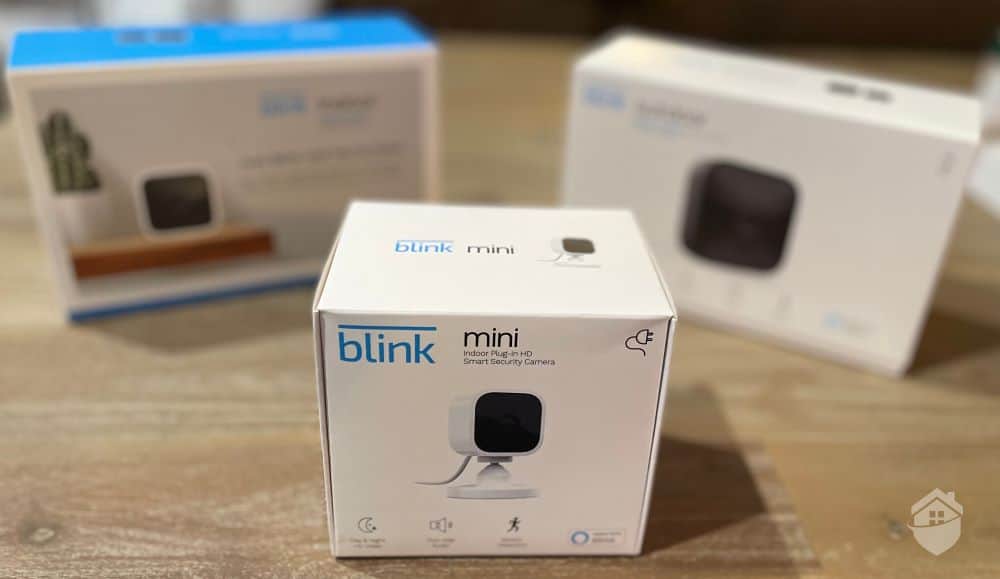
Blink Packaging
We might have mentioned it already, but one of Blink’s hallmarks is its simplicity. That’s true of Blink’s installation. I knew right away installation was going to be straightforward. Each of the three boxes that arrived contained exactly one camera, one sync module, two mounting screws, one plastic mount, and a battery replacement tool. Nothing more. Nothing less.
Quick note here: Both the Blink Indoor and Outdoor require a Sync Module. The cameras use Wi-Fi, but they connect to the Sync Module hub rather than directly to the outside. The hub then sends the signal out. This can affect how quickly alerts get to you. In addition, the Sync Module isn’t battery-powered, so I had to set it up near an outlet while keeping in mind its distance from each of the cameras. It has a range of up to 100 feet, but in my experience, it needs to be a little bit closer than that to the outdoor camera to account for possible signal interventions caused by walls.

Blink Indoor Equipment
Not really a DIYer? Don’t worry — like many “DIY” cameras on the market today, if you can turn a screwdriver, you can nail the install. The setup for Blink cameras in particular is especially easy. It consists of scanning a QR code with your phone, giving the cameras a name, and following the in-app instructions to sync everything up.
Okay, maybe that’s oversimplifying it, but the setup process doesn’t really require much expertise. All instructions were provided by the app – I think even my teenager could probably do it. I don’t know for certain, since he wanted to charge me $15. Overall, it took me less than 10 minutes to get each camera up and running. That’s 30 minutes of my lazy Tuesday afternoon well spent, don’t you think?
The only cameras I can recall that had an easier setup were from Wyze Cams. In fact, there’s a lot of commonality between these two brands. As a starting point, if you’re into simple wireless tech, you’ll appreciate both Blink and Wyze. Not only do they resemble each other somewhat in appearance, the cameras also cost less than much of the competition. We’re going back to talking about Blink now, but if you’re interested, you can find more on Wyze in our hands-on Wyze Cam review.
What was I saying? Oh, right – you almost have to be trying to make a mistake setting up Blink cameras. These are simple pieces of equipment to set up. You just pull up the Blink app and it makes all the connections for you.
Don’t think that means these cameras are overly simplistic to use. Making adjustments to your camera, once you’ve set it up, for instance? That can take more time. These cameras have some really useful tech that requires a more delicate touch to set up. So, while you can zip through attaching cameras to your walls, entering your Wi-Fi passwords, and letting your phone pair with the cameras, you’ll want to slow down during this part and take your time. That’s a good thing, though. The features are the real meat of these cameras. Besides, this is your chance to really get to know your camera.

Blink App – Video History
The upside is that all this tech gives you lots of control over what you are and aren’t recording. You need to make decisions about motion sensitivity, for instance, which is a key tool in making sure you don’t get false or unwanted alerts. You also need to adjust the infrared LEDs to make sure the camera’s night vision is clear and glare-free. Those are adjustments you generally won’t know you need to make until you’ve set up the whole system and have made your way through the app. But once you do, you’ll see a much better-performing camera system and more insightful alerts.
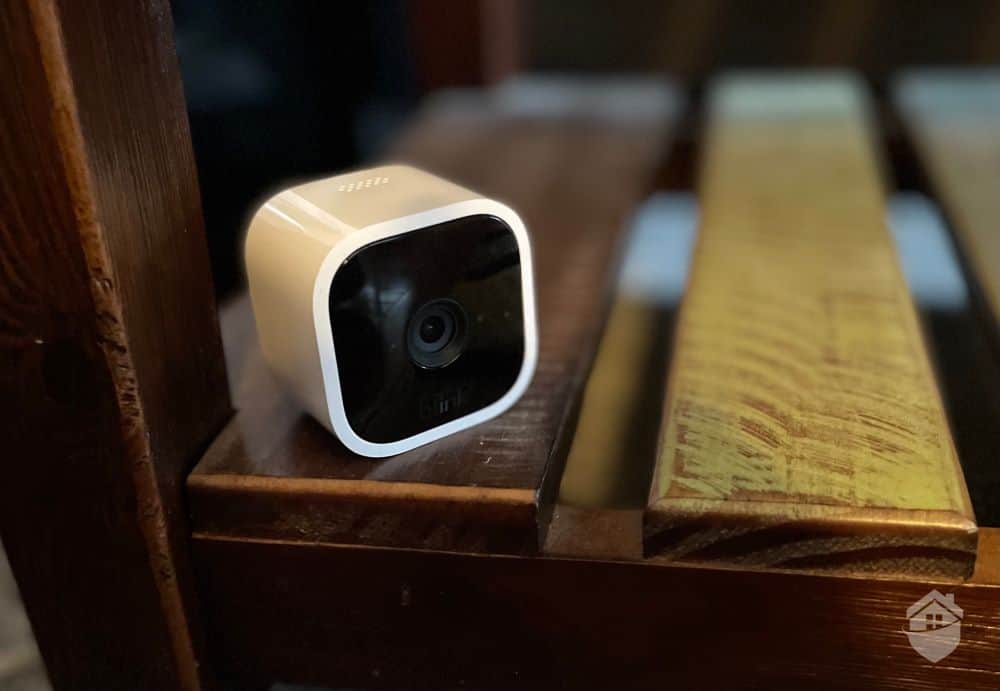
Blink Mini – No Stand
As for installing Blink, the cameras all echoed pretty much the same installation and setup process. The only exception is the Blink Mini, which is essentially a miniature of the Blink Indoor but with wired installation instead of a battery. You’ll learn more about each camera’s nuances and quirks in just a moment, but for now, let’s just say this: It’s not every day you can say you installed a whole system of security cameras in under 30 minutes.
Pro Tip: If you’re looking for home security with a lot of customization, Blink might not be the best fit. Instead, Vivint, a professionally monitored system, might suit you better. Check out our hands-on Vivint system review.
Next, we’ll dive into the Blink system a bit more, camera by camera.
But first, here’s a brief look at Blink’s stats, including how we review them:
| Days Tested | 50+ |
|---|---|
| No. of Cameras | 3 |
| Best Asset | Easy Installation |
| Video Resolution | 1080p HD |
| Price | $34.99+ |
With that, we’ll begin our hands-on experience with the smallest in the bunch: Blink Mini.

Blink Mini on Table
It might not look like much, but Blink Mini is a powerful tool in any home security toolbox. It did a great job taking care of the basics, and all in all, you can’t really expect more than the basics out of a camera that’s only $30.
My tests of Blink Mini centered around home entryways. Like all Blink cams, Blink Mini runs on fluid video, meaning it regularly fluctuates from higher (1080p) to lower video resolutions to allow it to run more smoothly and without gaps in your timeline. So the first thing to note: You won’t find much to gripe about in terms of video quality. This camera won’t let you down there.
When you first buy a security camera, you’re excited at the prospect of having a camera. Up to this point, you couldn’t see what was happening in and around your home, and that’s a cool improvement. If you have had your cameras for more than a minute, though, you know that the most important element of any camera – other than its ability to capture clear images – is its sensitivity adjustment. Without this, you’re doomed to constant alerts every time a leaf falls or a squirrel passes by your front porch.
As you’ll learn in our in-depth Blink Mini camera review, the sensitivity slider is one of this camera’s real selling points. While there are fancier camera features out there, this one may be the most important for keeping you safe. Most of us, when faced with tons of false alarms, stop paying attention to the alarms. If you know that every alarm matters, though, you’re going to pay closer attention to them.
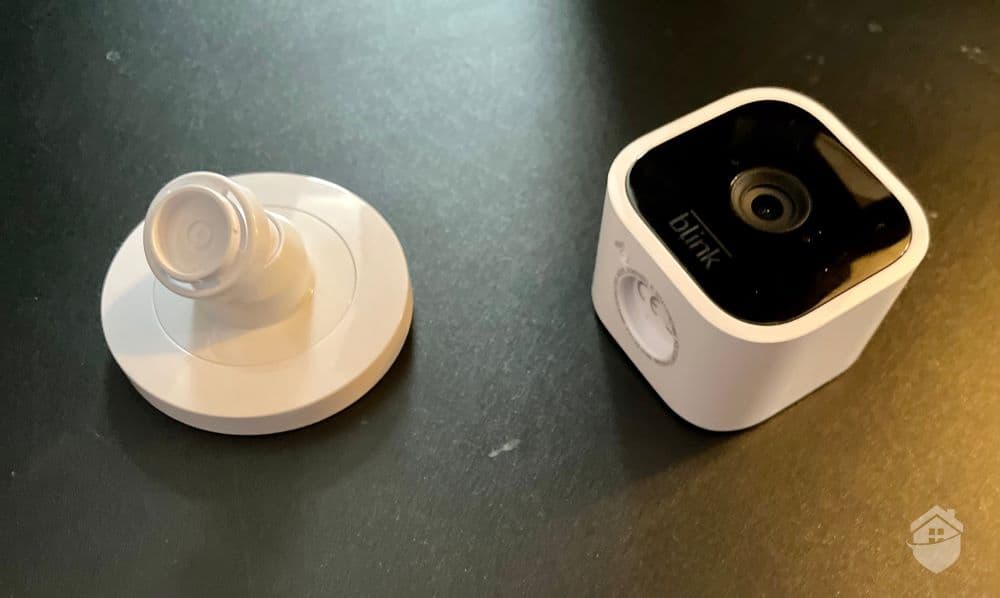
Blink Mini and Stand
One of the downsides of Blink cameras is that, while you can adjust their sensitivity, you can’t fine tune it much. You can set them to pick up almost everything, but then you wind up with alerts about your pets running in front of the camera. You can set them to ignore everything, in which case you’re not fully protected. There’s just not much in between. Still, for cameras that cost as little as $50, you do get a motion sensor, and that’s what is most important. A few clips of your pet barking when the mailman comes by aren’t a huge inconvenience in the larger scheme of things.
Just for comparison, let’s take a look at how the Blink Mini stacks up against its closest competitor, the Wyze Cam v.3. In past reviews, we’ve ranked Wyze a bit higher, but the Blink Mini v.2 has reversed the field.
| Features | Blink Mini | Wyze Cam v3 |
|---|---|---|
| Resolution | 1080p | 1080p |
| Viewing angle | 143 degrees | 130 degrees |
| Person detection | Yes | Yes |
| Night vision | Color night vision | Color night vision |
| Usage | Indoor or outdoor | Indoor or outdoor (IP 67 weatherproof) |
| Local storage | None | MicroSD card |
| Camera price | $49.98 | $35.98 |
Blink doesn’t offer a professionally monitored security solution – at least not anymore1 – so the task of monitoring your Blink cameras falls to you. That’s a big responsibility. It means that you have to respond to every single alert. You have to pull video footage and check it out. You have to decide what to do. You have to contact emergency personnel if that’s what’s needed.
The good news is, Blink’s intuitive app helps with self-monitoring. For instance, it let me switch easily between checking the live view and looking back at footage history. This came in handy that time when my smoke sensors detected smoke coming from my kitchen. I was able to see, thanks to the Blink Mini, that I left my oven on while baking lasagna, and I was able to rush home to turn it off before it turned into a disaster. Well, dinner was ruined, but at least my house didn’t burn down.
FYI: Recordings are saved in the cloud, but you’ll need a subscription for cloud storage starting at $3 per month. More on this later.
The only gripe I had about Blink Mini, for the most part, is that it’s wired. But that’s also why it’s a cheaper camera than its siblings. To avoid a hassle, just plan on displaying it close to a wall outlet. You know, instead of standing on a ladder yelling, “Anyone got an extension cord?” for 10 minutes until someone answers. (We’ve all been there, right?)

Blink Mini with Stand
Here’s the bottom line on Blink Mini: While it might be small and it doesn’t include all the features, it still packs the power and convenience of Blink’s other two devices thanks to a strong and intuitive app. That makes it a pretty worthwhile addition to the system.
That said, if you’re looking for slick features like activity zones, person detection, and facial recognition, Google Nest Cam review is another great place to look. Sure, the cheapest Nest Cam costs $99, more than twice as much as the Blink Mini, but you’ll get AI-powered features such as those mentioned above. Just something to consider in case the Blink Mini leaves you wanting for more.
At less than 3 inches tall, Blink Indoor is as modest as it is discreet. But with the convenience of wire-free setup, you’re also getting more flexibility than you’d get from Ring Indoor, another Amazon-branded camera. Read my full Ring Indoor camera review for more.
This security camera also made a great hallway monitor when I tested the Blink Indoor camera. The HD video quality and motion detection were top-notch. Unfortunately, Blink night vision isn’t up to par with competitors like the Arlo camera system. Arlo actually features full-color night vision which allows you to see what’s going on in greater detail. I should point out that night vision quality is important in outdoor cameras, but it shouldn’t be a deal-breaker in indoor cameras.
Blink Indoor’s viewing angle is somewhat narrower than other cameras- just 110 degrees. These days, it’s more common to see cameras that stretch out up to 160 degrees, as noted in my full unpacking of the Arlo Pro 3 cameras.
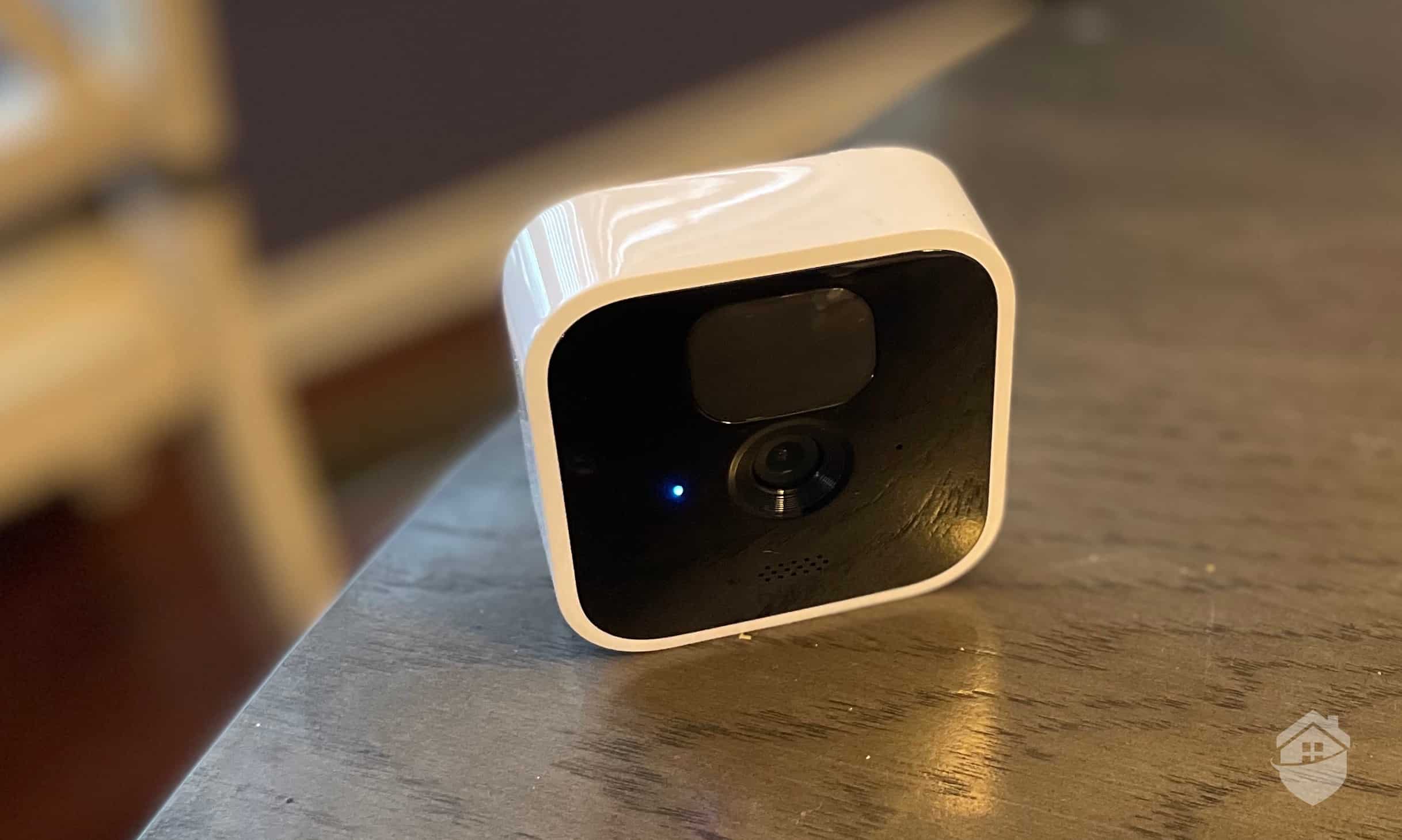
Blink Indoor Camera
I should point out, though, that a wider field of view isn’t always better. The truth is there are pros and cons to different size fields. Blink’s narrow-angle lenses in their cameras are best suited for monitoring specific targets, such as doorways and entrances, because objects appear larger detailed within the image. In cameras with wide-angle lenses,2 objects appear smaller, and you might see some occasional distortions along the edges of the frame during recording.
Even taking all of this information into account, I found the Blink Indoor field of view a bit lacking. If you want full coverage of a decent-sized room, you’ll need more than one camera. You’ll see what I mean if you scroll down a little further and watch the sample clip from my Blink Indoor. Despite my best effort at placing the camera strategically, it only managed to capture about three quarters of my living room, leaving pretty huge blind spots.
That said, if a wide-angle lens camera sounds appealing to you, take a peek at my Amcrest camera review, where you’ll learn about a pair of solid devices with wider viewing angles, and better night vision, too.
Blink’s video history produces a highlight reel of each day’s activity. With this history organized into individual frames, you can review everything with a glance. Because who wants to come home after a hard day of work and pour over video footage?
This clip above is an example of Blink’s highlight reel. I see this is another effort on Blink’s part to make their cameras as convenient as possible – and an impressive addition, considering the low price.
And in another nod to Blink’s energy efficiency, the Blink Indoor has a low-power mode to conserve battery life. The only difference in using this mode, in my tests, was about 3-5 seconds of delay from the time motion began to the time the camera began recording. By and large, that’s a negligible delay.
At $79, Blink Indoor is priced competitively, especially when you consider all that’s included in a kit: One Blink Indoor camera, one Blink Sync Module 2, durable mounting hardware, and four long-lasting AA batteries.

Blink Indoor Equipment
It’s a generous package, and with everything Blink has to offer, the camera still handles exceptionally well.

Blink Outdoor – Installed
Turning to Blink’s dedicated outdoor camera, it’s evident immediately that this one was built to be discreet. It only comes in all-black, as opposed to the black-and-white indoor cam. As far as aesthetics, it’s got a sleek finish and takes the same minimalistic cues as Indoor. In fact, you’re talking about the same camera, essentially, as Indoor, only with a tougher (IP65) weather rating.
I should point out that I tested the third generation of the Blink Outdoor. Blink has actually released a fourth generation. However, the differences between the two are largely cosmetic. The newer version features a matte black finish with a slightly more rounded face. It does promise to offer a wider viewing angle than the third generation and person detection, and we’d say those upgrades, though minor, are absolutely worth the $20 extra cost. Keep an eye out for our upcoming review to see why, but we have the Cliffs Notes version a few sections down:
At the risk of rehashing old grievances, night vision was pretty weak in my hands-on Blink Outdoor camera experience. In an outdoor camera, this is a bit of a letdown.
We wouldn’t say that the Blink Outdoor can’t see anything at night; it’s a matter of perspective. In night vision mode, for instance, we had no trouble seeing the cat walking on our front lawn. Identifying which one of our many neighborhood cats it was proved a bit more difficult. The question to ask yourself is whether or not you need the fine details.
You’ll find better night vision in one of the Ezviz cameras I reviewed recently, but generally, a camera with exceptional night vision needs some integrated lighting feature to do its best work. (Visit my Reolink Argus 3 Pro review for a really stellar night vision experience.)
On that note, Blink does have other options if you prefer brighter and better night vision. One of these is the Blink Floodlight Cam Wired. As the name implies, it comes equipped with powerful floodlights. Otherwise, it offers most of the same features as the Blink Outdoor. You should know, though, that it needs to be wired to an outdoor junction box in order to work.
If you prefer a floodlight with a wireless configuration, you might check out the Blink Outdoor floodlight mount. It allows you to use the Blink Outdoor as the camera, but the mount itself provides two bright battery-powered floodlights.
Blink also recently introduced a solar panel mount that works with all of its outdoor models. For the most part, you can set up solar power and get worry-free video monitoring. No need to locate an outdoor outlet and no need to change batteries. Just more evidence of how forward-thinking Blink is.
Since it’s an Amazon brand, Blink doesn’t integrate quite as seamlessly with Google Home devices, so you won’t be able to say, “OK Google, show me my patio” and similar voice commands to control the cameras.
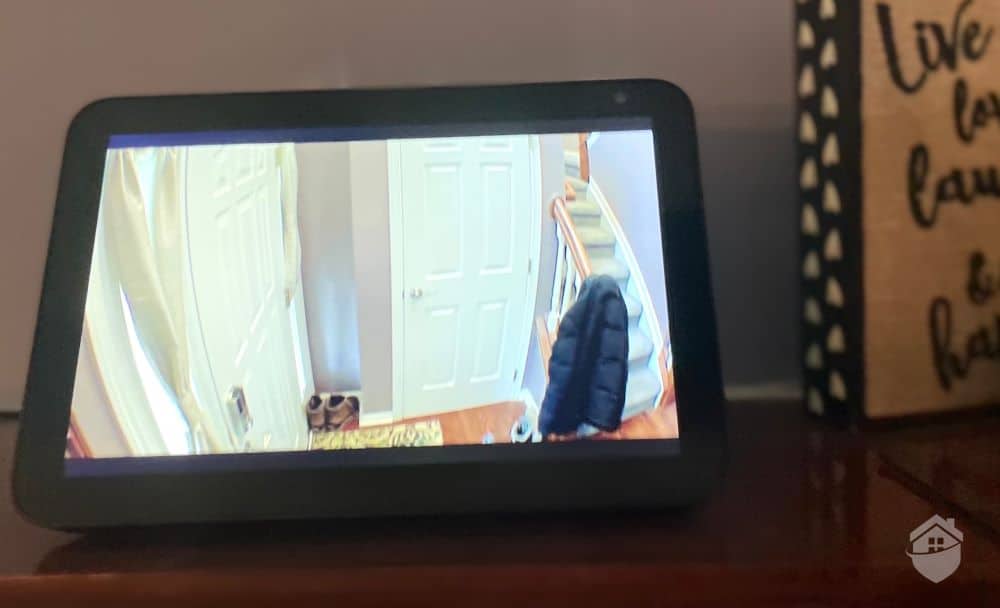
Blink Mini on Alexa
Amazon Alexa users, on the other hand, should be pretty delighted. If you’re taking an impromptu trip out of state in the near future, you can use the Alexa app to check the temperature in your home (via a Nest thermostat) and, at the same time, peek into the Blink Indoor camera to make sure the dog sitter has shown up. Actions like this are a quick, efficient way to get peace of mind when you can’t be home.
Of course, you’ve got plenty of other choices if you’re looking for cameras that do integrate with multiple platforms in addition to Alexa, like Google Home, IFTTT, and Samsung SmartThings. In my latest review of Reolink’s cameras, integrations were a bit easier thanks to a smart home tab in their mobile app. This way, almost every camera Reolink makes (and there are many) can be fed into a smart home ecosystem with little fuss, with plenty of cross-platform functionality to boot.
FYI: Affordable and simple as they may be, Blink cameras are pretty weak when it comes to automating with non-Amazon devices. Some brands don’t always play nice with each other; read our comprehensive home automation guide to learn more.
Smart home challenges aside, Blink Outdoor redeems itself in other areas, exhibiting the same strengths that made me a fan of the brand in the first place: Fluid video resolution at up to 1080p; seamless two-way talk; customizable motion detection; and that easy installation Blink is famous for.
Before pivoting into pricing and storage options on Blink, I think it’s worth pointing out that these cameras are not ideal as pet monitors. While they’re pretty sensitive to most types of motion out of the box, in my tests, none of the Blink cameras were triggered by the family dog, as wiggly and rambunctious as he is. It could be that more fine-tuning in the app is needed to remedy this, but it could also be that this $80 camera just isn’t strong in this way, and that’s totally okay.
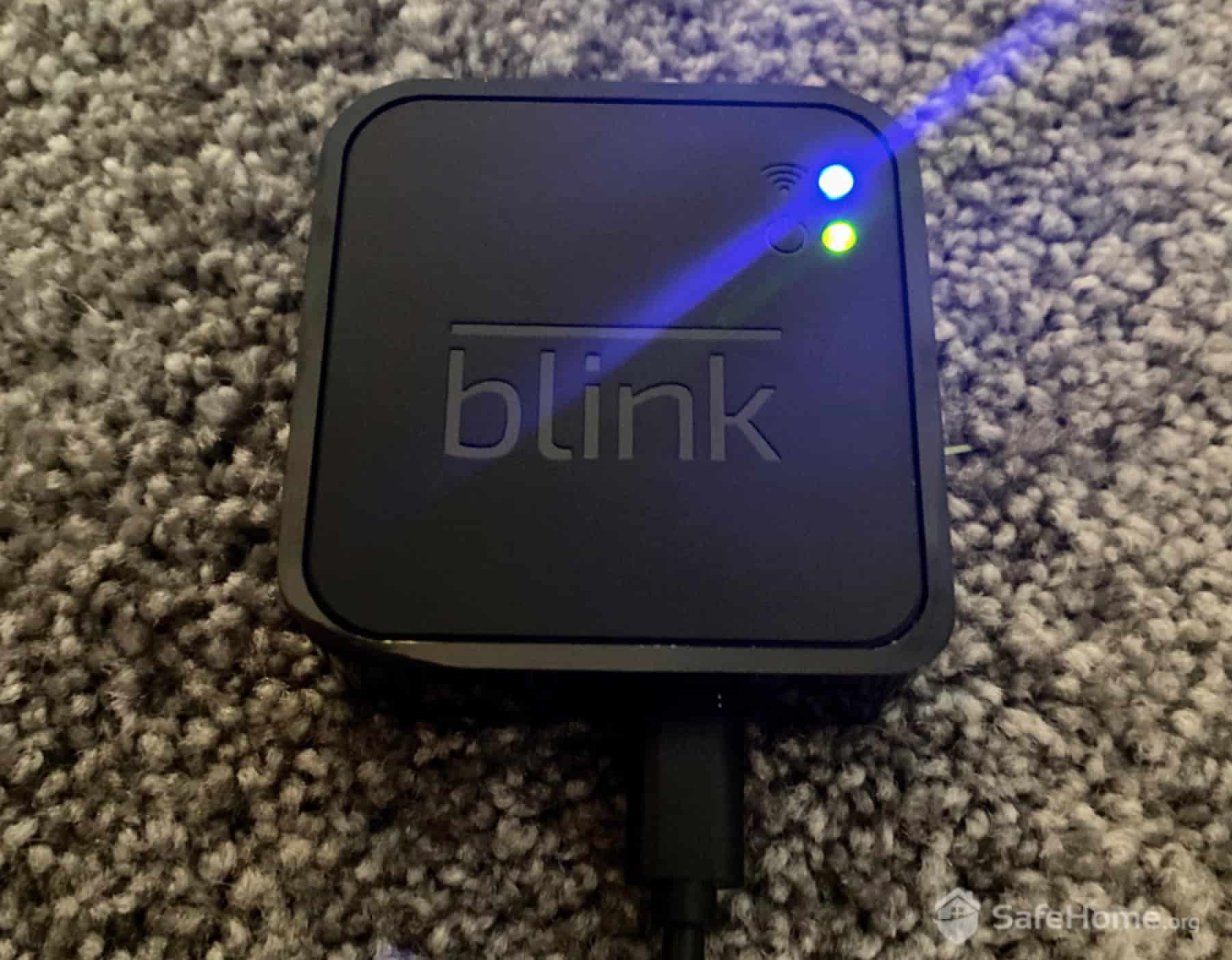
Blink Sync Module
Fortunately, there’s a camera or two out there that handles this much better. As noted when I tested and reviewed YI’s Home 3 camera, the camera seemed to enjoy sending entertaining recordings of said pup in all sorts of precarious positions – no app tinkering needed. Keep in mind, too, this camera costs $20, so there isn’t much tinkering to be done, anyway.
Who knows, maybe the dog ate jumping beans that day. But it’s just something you might pick up from time to time when comparing home security companies. Motion sensors sometimes work in mysterious ways.
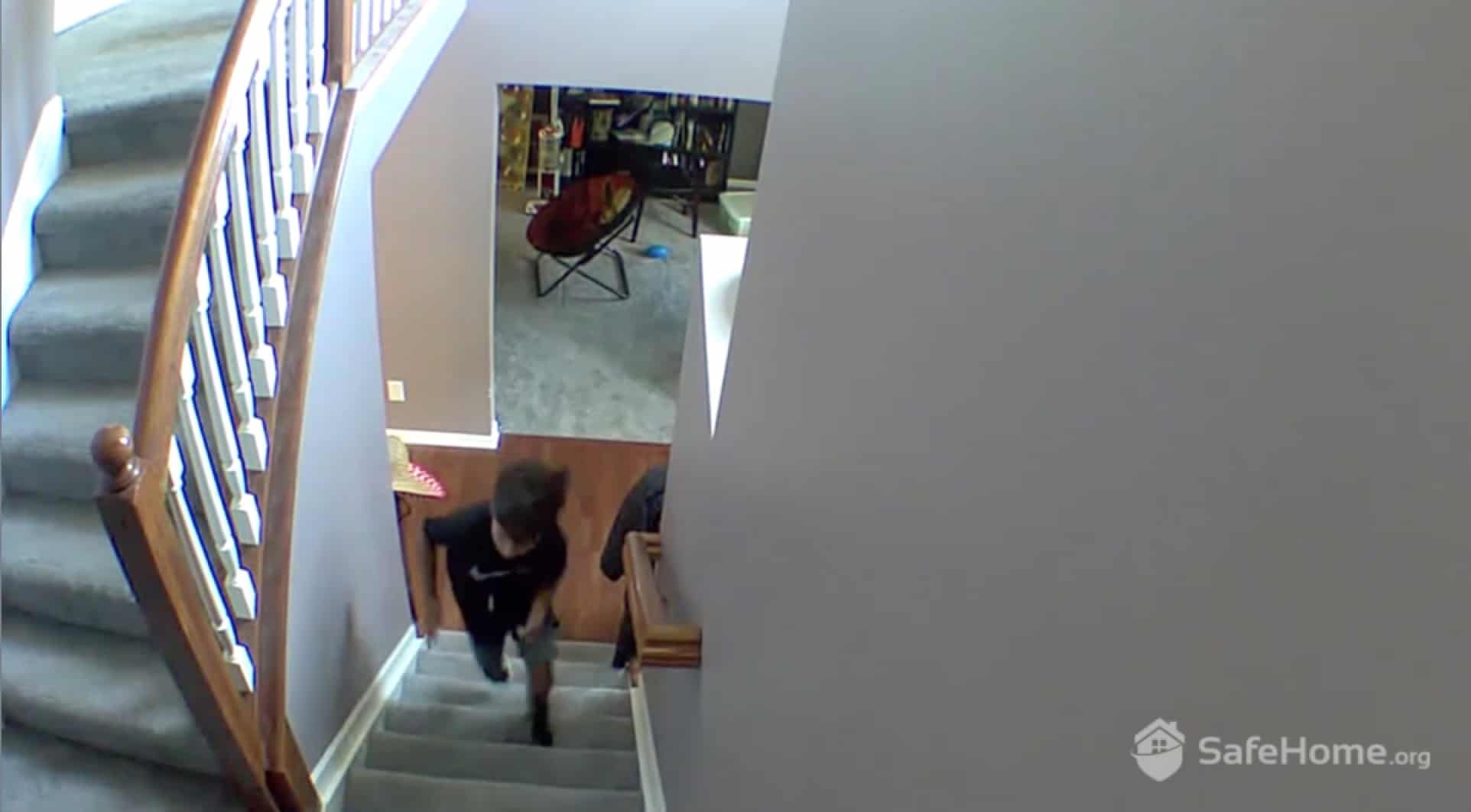
Blink Day Vision
Now that you have a pretty good understanding of the Blink outdoor 3, let me give you a brief preview of their newest iteration, the Blink Outdoor 4.
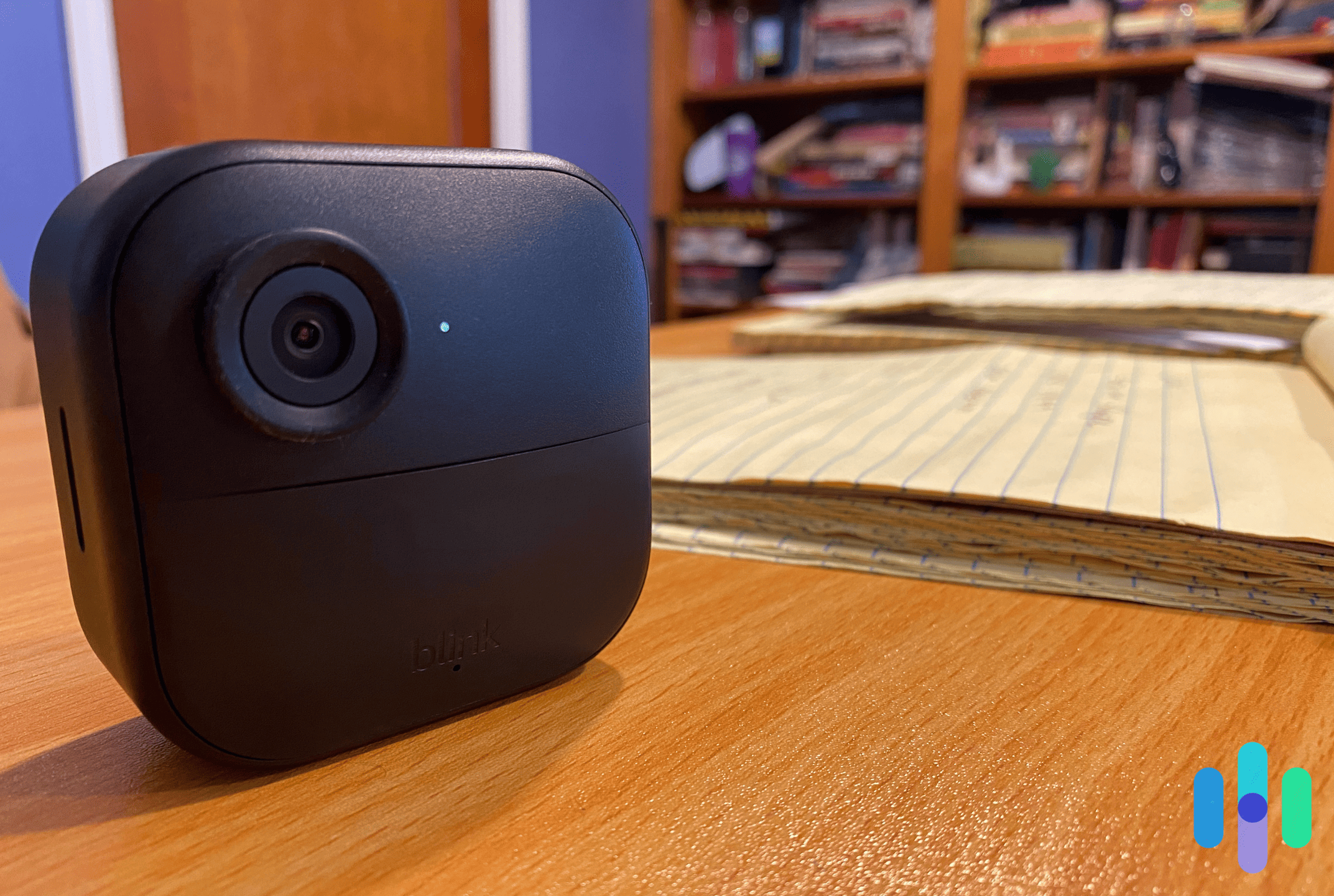
The Blink Outdoor 4
Overall, the Blink Outdoor 4 is pretty similar to its predecessor. It offers the same 1080p resolution and about the same field of vision. It does differ; however, in three pretty substantial ways:
The differences aren’t night and day, but they are enough that you’re going to notice a enhancement from the 3 to the 4. I certainly did.
One note on that last piece, though. To take advantage of the Blink Outdoor 4’s motion detection capabilities, you’re going to need to sign up for a subscription. It only costs $3 per month though, and we have more details below.
When comparing pricing in security cameras, I always like to start with a disclaimer: You do get what you pay for, so choose wisely. Blink is far from the cheapest camera brand you’ll find out there, as the industry is brimming with low-cost cameras these days. Some folks might bristle at paying $100 for a Blink camera, but keep in mind that this is a solid battery-powered camera, the likes of which usually isn’t available for under $100.
Of course, you could always go with the Blink Mini if you’d rather save on equipment costs – for $35, Mini is an all-around good camera.
Below is a snapshot of pricing for Blink cameras, keeping in mind that the cameras also come in 2-, 3-, and 5-pack systems, if you choose. Feel free to check out my Blink Camera pricing page for more info, and while you’re at it, head over to the latest rundown of Blink Prime Day deals and discounts.
| Blink Model | Price | Features |
|---|---|---|
| Blink Indoor | $79.99 |
|
| Blink Outdoor 3 | $99.99 |
|
| Blink Outdoor 4 | $99.99 |
|
| Blink Mini | $29.99 |
|
| Blink Video Doorbell | $59.99 |
|
| Blink Wired Floodlight Camera | $89.99 |
|
| Blink Mini Pan-Tilt | $39.99 |
|

Blink Sync Module
Since Blink has discontinued their free cloud storage option, you’re now left with two options to store video history with Blink: A basic plan, for $3 per month, and a premium option for $10 per month.
These costs are pretty well aligned with Blink’s close competitors. Swann’s $5-per-month plan, for example, offers basic storage but not too many of the extras Blink includes in their subscriptions. With everything you’ll get in an affordable Blink system, I don’t think paying $3 per month to store videos (or $30 for the whole year) is stretching it.
Here’s a breakdown of Blink’s storage costs, keeping in mind that you also have the option to attach a hard drive to your Blink sync module to store video on your own:
| Blink Plans | Basic | Plus |
|---|---|---|
| Motion-Activated Alerts | Yes | Yes |
| Live Streaming | Yes | Yes |
| Video History | 60 Days | 60 Days |
| Two-Way Talk | Yes | Yes |
| 10% off Blink Products | No | Yes |
| Warranty | 1 year | As long as subscription is active |
| Number of Cameras | 1 | Unlimited |
| Price | $3 per month | $10 per month |

Blink Mini (left) and Blink Indoor (right) Cameras
With Blink, you’re promised a hassle-free experience, and you’ll get one. Indeed, these cameras are nothing if not consistent. For folks who don’t feel comfortable around security equipment or just don’t have the time to learn and interact with technology, Blink is a consistent leader. It certainly belongs in our roundup of the best cheap security cameras.
To summarize, here’s what I think Blink’s strengths and weaknesses are.
Strengths:
Weaknesses:
Now it’s your turn to decide. Do the pros outweigh the cons? Will Blink work in your home setup?
With the extended-life batteries included in every Blink camera (except Blink Mini), you’ll get about two years of battery life with typical use. From what I’ve seen, that’s a whole lot of battery life in one charge.
Since they’re owned by the same company, Blink and Alexa play well together. You can set up your Blink cameras to use voice commands through an Amazon Echo. It does not work as smoothly with Google Assistant, though.
No. Blink cameras use standard infrared night vision that is not colorized, so you’ll get a pretty grainy picture at night.
Yes. The cameras have USB ports, and a power cord is included in the box, in case you’d rather wire the cameras for continuous use.
While not the cheapest camera on the market, Blink is generally considered an affordable brand. Their most expensive camera is $100, which isn’t bad for a battery-powered camera.
The Sync Module is a small, shallow box that comes with the Blink Indoor and Blink Outdoor cameras. The module receives information from Blink servers through your home Wi-Fi, and sends notifications to our phone. Cameras receive information from the Sync Module, then send images and notifications through your Wi-Fi. You can also use the Sync Module to attach an external hard drive via USB.
IFSEC Insider. (2017 Jan 4). CES 2017 sneak peak: Blink set to unveil home security system with moisture sensors for leak detection
https://www.ifsecglobal.com/global/ces-2017-blink-home-security-system-leak-detection/
Lorex Technology. (2021). Guide to Field of View & Lens Types.
https://www.lorextechnology.com/self-serve/guide-to-field-of-view-lens-types/R-sc2900041